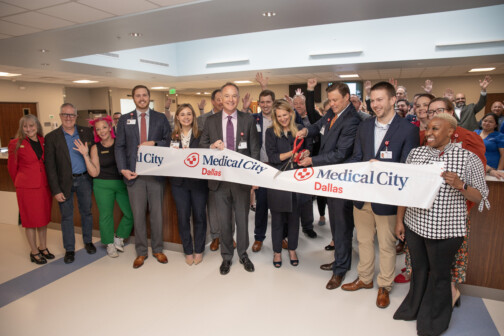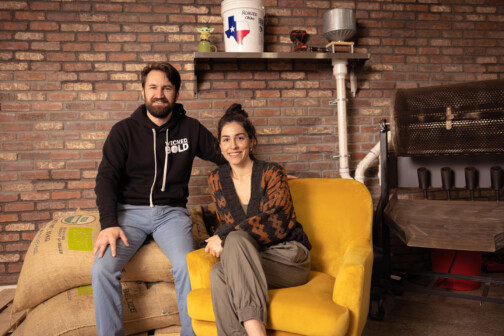COMMITTEES INSPIRE boredom, derision, inertia. Given the choice, committees would prefer never to let the good times roll. When sending out for lunch, committees prefer sandwiches without crusts, and please hold the Tabasco. Committees like rounded edges and the absence of adjectives. The life expectancy of an idea before a committee averages 3.4 seconds. The favorite expression of a committee is, “Whoa!” If you want your passion to go unrequited, take it before a committee.
But.
Once in a very great while, the deliberations and actions of committees leave us in their considerable debt and entirely better off than we would have been without them. I’m not talking about the House Un-American Activities Committee or the vigilante committees that every so often try to purge our libraries of Huckleberry Finn; I’m talking about those committees that helped see the dream of the Dallas Museum of Art through to greatness. As museum director Harry S. Parker said, “Committees can lead, not just compromise-if they’re capable of clear thinking.”
The DMA’s museum study committee and its successor, the architectural selection committee, worked for a year before Edward Larrabee Barnes was chosen to design the building. The committee took an unequivocal position that this was to be a museum for art, not another architectural statement that would hardly acknowledge either the purpose of the building or the fragility of the art. One big-name architect was dropped from consideration because of his love for windows. (It’s a small irony that artists are so influenced by light in their work and yet their finished art is so vulnerable to light.) Another well-known designer failed to make the grade because of the contempt he held for budgets. The DMA’s building committee was determined that the museum would be brought in on budget.
The committees followed a familiar pattern in trying to incorporate various types of expertise within the membership-but in this case, it worked. One member of the building committee said that he liked the warmth that carpeting creates. Another said, “Yes, that’s nice, but how practical will it be, and how costly will it be to maintain?” A third member, who had the knowledge, said that it didn’t cost that much. So now the DMA has carpeting, and, in a small way, it makes the museum experience more pleasurable.
On another occasion, a woman committee member quietly commented that she was always refreshed by seeing sculpture in a natural setting. That comment led to the exploration of incorporating interior courtyards into the museum’s design. Another member said, “But then too much natural light will enter the galleries.” So the architect designed overhangs for the courtyards, which cut the light entering the galleries to acceptable limits. In both of these examples, ideas and desires were neither dismissed out of hand nor quickly and illogically embraced. They had to run a gauntlet, and the process improved them.
The Gateway Gallery is perhaps the most compelling example of a committee’s determination to pursue its goal even in the face of strong opposition. Barnes was lukewarm at best about the idea of a specified area for children in the new museum. But a committee of young women did their homework, searching the country for examples of what they wanted. They ended up with an idea for a children’s space. In effect, they wore the architect down-not in a highhanded way, but through carefully reasoned arguments. They didn’t win; we won. Barnes did respond, and the Gateway Gallery is the result. As Parker said, these committee members didn’t have the actual power to force Bames to do their bidding, but Bames responded to their intelligent, tenacious advocacy.
Another factor that contributed to the successful efforts of the museum’s committees may have been the pattern of contributions. Of the $25 million in private funds given for the new museum’s construction, no single individual gave more than $2 million. In raising money of that magnitude, there’s usually a lead gift in the $5 to $8 million range. But in this case, the big giver’s ability to dominate (“I’d like an 8-by-12 portrait of my third husband in the entrance”) was lessened. This situation created the opportunity and the need for effective committees.
The Dallas Museum of Art wasn’t designed by committee, but it would have beena lesser success without the energy of itscommittees. Even the wishes of Parker, themuseum’s primest of prime movers, wereoccasionally denied. He summed it up:”The Dallas Museum of Art does credit tothe common sense and good will of ourcommittees and the absence of hidden agendas.” The result is no camel, but a triumphant thoroughbred.
Get our weekly recap
Brings new meaning to the phrase Sunday Funday. No spam, ever.
Related Articles

News
Medical City Opens ER in Garland and Local Dermatologist Named Youngest Ever President of the American Academy of Dermatology
Plus Health Wildcatters wins accelerator competition and DFW Hospital Council Foundation awards.
By Bridget Reis

Business
Wicked Bold Chocolate CEO and Comedian Deric Cahill on Why it Pays to Be Funny
The brand leans into humor, but the business' success is no laughing matter, with products in nearly 2,000 retail locations nationwide.
By Will Maddox

D CEO Award Programs
Nominations Open: D CEO’s 2024 Corporate Counsel Awards
The annual program honors top in-house attorneys in Dallas-Fort Worth, from outstanding up-and-comer to outstanding general counsel.


